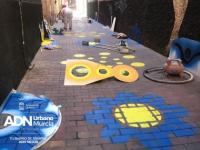
Online engagement has significantly modified the nature of person-to-person interaction and communication, as well as it has the person-to-business and person-to-entity relationships, migrating traditionally face-to-face interactions to the virtual world, regardless of the context. Causing a vastly greater flow of information and increasing the amount of interactions and inputs received (e.g. conversations, advertisement, news, events, and a colossal etc.) to hundreds of impacts each day, making it harder to filter and focus on priorities, necessities and the veracity of the received and perceived information.
If citizens are present on social media, so should their government, seek to develop digital relationships and establishing communication channels that can be activated from anywhere, at any time, and with minimal effort.
As do companies, local governments should build the brands’ image and reputation, carefully confectioning content and citizen engagement, be it the way the information is presented, the tone that is used, the tools selected, and the content that is generated (e.g. digital flyers, images, (micro)videos, pictures, infographics, GIFs, and again, a colossal etc.) reinforcing the institutions ability to inform, educate, mobilise, engage and consult citizens. Leading to a decisive transformation of governance toward an open and inclusive format, profoundly changing the basic aspects of government.

|
In models of traditional democratic processes and citizen engagement government act as the commanding entity and citizens as recipients, treating them as unable and unqualified i.e it would be better defined as participation without actual engagement, and leaving the citizens with a “participation” or “consolation” trophy.
As such we can identify i.e. 1) Citizens will be more active in public affairs, from city planning to policy making, 2) Increasing needs for information on policy and governance, demanding transparency, 3) A demand for open governance models with citizen consultations, e-participation, 4) Modernisation of local government and the city itself, Smart City and e-governance. 5) The cry for governments and politicians to close (or at least shorten) the more than evident trust gap between government and society.
The aim of this Integrated Action Plan (IAP) however, is not the citizen participation and engagement process itself(1) and although solutions must be developed to tackle the subjacent participatory governance issues, the IAP focusses on meaningful and integrated communication strategies and solutions for online communication with and digital engagement of citizens, as it deepens engagement with those who are already interested in issues being addressed, whilst offering possibilities of reaching new audiences who might otherwise not contribute. We do not only want to “broadcast” information and to seek unilateral “unengaged” responses, we want to listen and establish a dialogue with our citizens.

|
It is necessary to benchmark the current culture and assess where you stand as a local government, how do people perceive you and the personality you have (as a city hall). As this “personality" can be used to create a positive public image which helps build long-lasting relationships with citizens and other stakeholders. And it is important to keep in mind there is no one “right” way to do this, the essential pretence is to align the way you communicate and the tone you set into a “personality” for the institution, meaning the people that communicate online on behalf of the institution, live that personality and embrace what it stands for.
From the communication point of view have defined our City Hall’s core values, both the transcending values, what the institution stands for and therefore wishes to communicate, and which all communication should reflect, as guidelines on how to add (a maximum of two) additional values and how to integrate them into all online communication, for a specific subsector, as well as articulating which tone to use. E.g. transparency would be a core value, which every aspect of city communication should display, whilst communication from the department of youth directed specifically to youth, could easily have an added value which could be “youthfulness”, “colourfulness” or “joyous/happy”, VS “accuracy”, “supply data” or “visual representation” could be added values for the Statistics & Open Data Platform, as they, each in their own way, constitute values that are more inherent to the target audience.
The communication values have to be transformed into communicational behaviour, how to transmit the selected values through communication whilst using the predetermined tone, acting from the created personality. Once this is clear the communication channels can be chose, and although this can be done in many ways, the most straight-forward approach is using the most popular ones, we don’t choose the tools our citizens use, and as any private company would say “you have to be where your (potential) clients are”.
Identify key players willing to assume communication responsibilities within department, by choosing people compatible with the philosophy that has to be communicated, the necessary knowledge on the topics to be communicated on, and naturally sociable people, those that are sociable in an offline setting, as they know how human interaction works, are better at it, and having more developed interpersonal skills, tend to perform better in an online setting.
The communication strategy in turn is a dynamic approach to a constantly changing environment. Situations and circumstances vary and we are reactive to this changing setting. Based in the previously mentioned values, tone and channels, content is generated and transformed to represent the underlying personality. In this aspect coherence is of vital importance as the perception of multiple personalities (i.e. persons) would undermine the goal of creating a persona for the entity. Each new “message” that’s developed (e.g. next year’s spring festival, a specific campaign to encourage recycling, etc.) should adhere to the core philosophy, just like a person would. And finally, qualitative and quantitative data should be monitored to assess the effectiveness of generated content, and to double down on well-functioning engagement.
Municipality of Murcia
